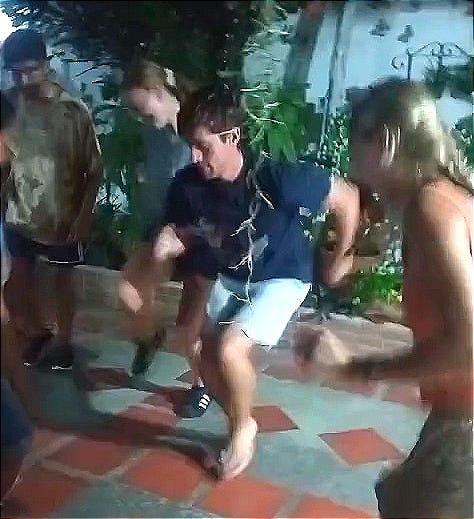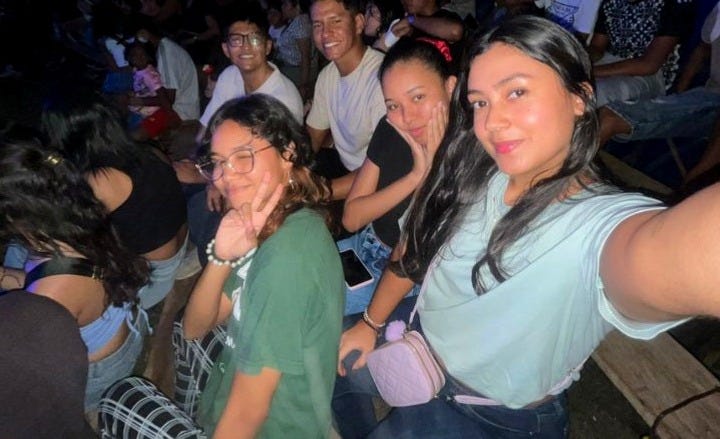I came with what I had. Unlike some of my fellow PCVs, I had not done research—on anything. I arrived, unsurprisingly, not knowing the music played in Colombia. I was only familiar with pop stars such as Shakira, Juanes, Maluma, Karol G, and J Balvin. So, before arriving in September, my knowledge of Colombian music was limited to what I had heard on Telemundo (also, who hasn’t listened to Shakira? As of March 29, 2025, “Hips Don’t Lie” has 1.9 billion streams on Spotify).
There are the songs that make it to the United States, but when you’re back home, you don’t know what Colombians listen to on buses, terrazas, discotecas, restaurants, town concerts, or pre-Carnaval weekend mornings. Naturally, after more than seven months here, I still haven’t done proper research–the bulla of a picó or parlante has made that unnecessary. Simply experiencing the coast has allowed me to develop my quotidian playlist.
Below are song recommendations and accounts of how we met. These aren’t all the stories I want to share, but, I shall tell those another day.
“El Malambito Efectivo” by DJ Rata Piano
On our first Saturday of training, the trainees in Ponedera came to my house to “learn” how to dance—an essential skill for going out on the coast. My host sister, nephew, and nieces were our guides, and they speed-ran through all the coast’s popular genres. The most memorable moment came when they introduced us to champeta–a blend of African and Caribbean music sampled, fused, and developed by DJs called picoteros.
Initially, the most captivating feature wasn’t what I heard but what I saw: it was all in the legs, and it was quick and short. Bounce, bounce, bounce, and kick. Step over. Step over. Kick. Twist. Stop. Again. Repeat. Of all the dances that day, champeta put the quotes around “learn.”
Champeta is characterized by the sound of backspinning, animated guitar melodies, and electronic drums. But if you can’t tell whether you’re listening to champeta or not, just look at those dancing. If you’re staring in awe and wondering how they move like that, it’s probably champeta.
More champeta:
“El Agite” by TheKingDeejay
“La Propia Sorpresa Perreo Skorpion” by Champeta & Mas Naa
“Awuthule Kancane” by Mahlathini & The Mahotella Queens
“La Mujer Ajena” by Conjunto Son San
“La Mujer Ajena” was the first song I attempted to Shazam—albeit unsuccessfully. I first heard it blasting from a picó, a massive sound system (massive as in it has to be transported on a light-duty commercial truck). I could make out the song, but my phone couldn’t sort out the tsunami of noise. Fortunately, my host sister heard it too, and since it’s one of her favorites, she was able to reveal its name.
That was during training when I was adjusting to life in the pueblo, when I learned that sitting outside on the terraza is cooler than staying inside, and when the picó first entered my life with all its force. Since then, I’ve only heard “La Mujer Ajena” emanating from a picó or a smaller, but still powerful speaker.
“Mi Negra Va a Gozar” by Paul Ortiz y la Orquesta Son
I was in Barranquilla with PCVs for Carnaval, and we went to a brunch spot recommended to us by more experienced volunteers. There wasn’t enough room in the main dining room, so we were moved into a speakeasy-like space downstairs. That’s where I heard it.
The contrast between listening to salsa and sitting feels wrong. In fact, it hurts. I wanted to leave. We were in Barranquilla, for Carnaval, and I wanted to dance. That want was latent, and in the least convenient setting, “Mi Negra Va a Gozar” was beckoning me to move.
We were squeezed into a corner, and with someone else’s dish forced onto my lap, I did the only thing I could—I Shazam’d the song.
More salsa:
“Tú con Él” by Frankie Ruiz
“Aventura” by Grupo Niche
“Oiga, Mire, Vea” by Guayacán Orquesta
“Muere una Flor” by Binomio de Oro
My host sister asked if I could give her and her friend English classes. It was only week two at my site, and I was still settling in. Eager to teach, I said yes. Since then, we’ve added members to what has now become an English conversation club.
Largely informal, I used the meetings as opportunities to try different learning activities. In the club’s early days, I had one class where the members explained the messages hidden within song lyrics. This also allowed me to introduce them to the music genres heard in the United States, but after an hour and a half, I realized there were too many. I felt the session was dragging and decided to end class. But before I could pack up, the group told me they wanted me to do the activity again—this time with Colombian songs, and I had to explain the messages.
They chose vallenato, the quintessential costeño genre. Vallenatos were a perfect fit for the activity. They tell stories—often about romance—and, hailing from the coast, contain language specific to my new home.
While I had heard “Muere una Flor” many times before—on the bus, passing a neighbor’s house, at the stand where I buy arepas e’ huevo—I had never really listened. And when I finally did, I couldn’t crack it. In fact, another club member needed an explanation. As its heartbreaking title suggests, this song tells a painful story. It’s a melodic, doleful tune about unrequited love. In veiled language, the song’s protagonist recounts how he abandoned the woman he impregnated. Melodically, “Muere una Flor” is romantic—the message is anything but. Now that I get it, I wish I didn’t.
More vallenato:
“Amarte Más No Pude” by Diomedes Díaz
“C*ño, ¿Qué Pasó?” by Silvestre Dangond
“La Creciente” by Binomio de Oro
To others, these songs may just be songs. But for me, they are tied to moments shared with the most important people in my life right now. For aspiring PCVs or future travelers to Colombia, you can add these songs to your playlist, or save them for when the moment finds you.
Thanks for reading OÍSTE! Subscribe for free to receive new posts and support my work.
Disclaimer: The content of this publication is generated by individual volunteers. The opinions and thoughts expressed here do not reflect any position of the United States government or the Peace Corps.





